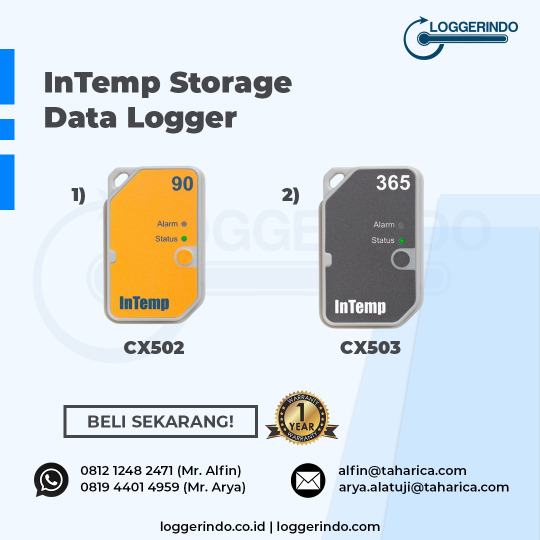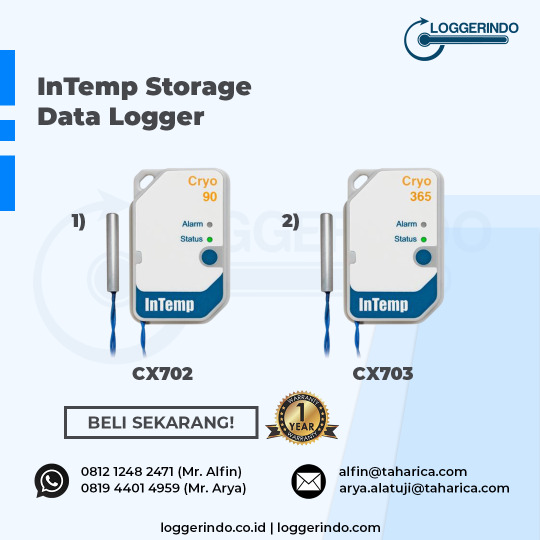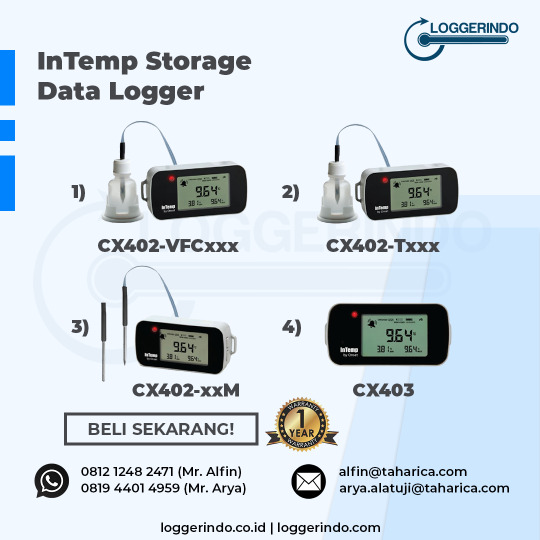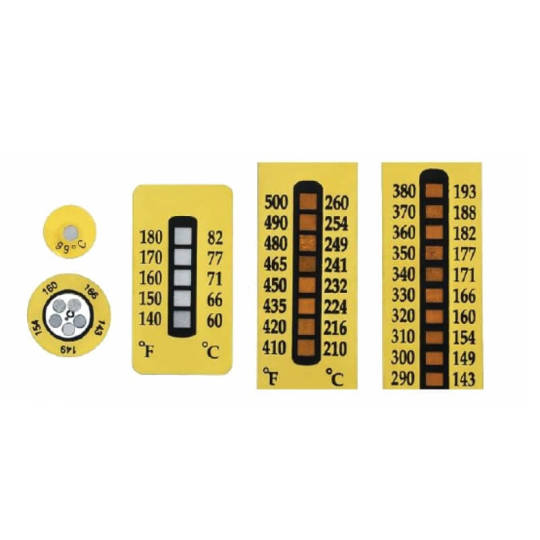#Coldchain
Explore tagged Tumblr posts
Text





InTemp Storage Data Logger . Temukan variasi Storage Data Logger yang sesuai dengan kebutuhan anda disini! . . Ingin tau lebih lanjut? atau ingin bertanya? Silahkan hubungi kami melalui : -Whatsapp : 0812 1248 2471 (Mr. Alfin) / 0819 4401 4959 (Mr. Arya) -Email : [email protected] / [email protected] -Website : loggerindo.co.id / loggerindo.com
#coldchain#coldchainvaksin#coldchaindatalogger#coldchainmanagement#coldchainlogistics#distribusi#logistik#gudang#penyimpanangudang
#coldchain#coldchainvaksin#coldchaindatalogger#coldchainmanagement#coldchainlogistics#distribusi#logistik#gudang#penyimpanangudang
2 notes
·
View notes
Text
Discover the latest innovations in refrigerated transport, enhancing efficiency and sustainability in cold chain logistics for temperature-sensitive cargo.
#coldstorage#refrigeratedtransport#coldchainlogistics#perishablegoods#temperaturecontrol#dardania logistics#supplychain#coldchain#logistics
0 notes
Text
Cold Chain Packaging Market Poised for Transformation with Emerging Technologies and Eco-Friendly Materials
The cold chain packaging market is experiencing robust growth as industries demand more efficient and reliable temperature-sensitive logistics solutions. Cold chain packaging refers to systems and materials used to maintain a consistent low-temperature range for perishable products during storage and transportation. It plays a pivotal role in preserving the integrity of products such as pharmaceuticals, food and beverages, chemicals, and biological samples.

Rising Demand in Key Industries
The primary driver behind the growth of the cold chain packaging market is the increasing global demand for temperature-controlled pharmaceuticals and biologics. With the rise in chronic diseases and the expansion of biopharmaceuticals, there is a pressing need for secure and reliable cold chain systems to maintain product efficacy and safety. The COVID-19 pandemic further amplified this need, showcasing the importance of efficient cold chain logistics in vaccine distribution.
In the food and beverage industry, globalization of trade and shifting consumer preferences toward fresh and organic products have necessitated high-performance cold chain packaging. Perishable foods like dairy, meat, seafood, and frozen goods require stable temperature environments to prevent spoilage, maintain quality, and comply with stringent food safety regulations.
Innovation in Packaging Materials and Technology
Technological advancements are playing a crucial role in the evolution of cold chain packaging. The development of phase change materials (PCMs), vacuum insulated panels (VIPs), and smart packaging with temperature indicators and GPS tracking have revolutionized the way sensitive goods are stored and transported. These technologies help companies monitor temperature in real-time and mitigate risks during transit, ensuring product safety and reducing losses.
Sustainable and reusable cold chain packaging solutions are also gaining traction. With increasing environmental concerns and regulations on plastic use, companies are adopting eco-friendly packaging materials made from recycled content or biodegradable polymers. Reusable insulated containers, along with active and passive refrigeration systems, are becoming standard in many cold chain operations to minimize waste and optimize cost-efficiency.
Market Segmentation and Regional Insights
The cold chain packaging market can be segmented by product type, material, application, and geography. Popular product types include insulated containers and boxes, refrigerants (such as gel packs and dry ice), labels, and temperature monitoring devices. Materials used range from polystyrene foam and polyurethane to corrugated fiberboard and advanced insulation films.
Geographically, North America holds a significant share of the market due to its established pharmaceutical and processed food industries, along with a strong regulatory framework. Europe follows closely, driven by stringent quality and safety standards. However, the Asia-Pacific region is projected to grow at the highest CAGR, owing to rising healthcare investments, increasing food exports, and expanding cold storage infrastructure in countries like China and India.
Challenges and Opportunities
Despite the promising outlook, the cold chain packaging market faces several challenges. High initial investment and maintenance costs for temperature-controlled packaging systems can deter small and medium-sized enterprises. Inconsistent infrastructure in developing economies, along with varying regulations across regions, also hinders market expansion.
However, these challenges present opportunities for innovation and collaboration. Companies are investing in R&D to develop low-cost, high-efficiency packaging alternatives. Partnerships between packaging manufacturers, logistics providers, and technology firms are creating integrated cold chain ecosystems. Furthermore, digitalization and automation are enhancing traceability and compliance, thereby improving overall supply chain efficiency.
Future Outlook
The future of the cold chain packaging market looks promising, with projections indicating consistent growth through 2030. Increasing globalization, urbanization, and online grocery and pharmaceutical deliveries are expected to further drive demand. As companies strive to meet regulatory compliance, reduce waste, and improve sustainability, innovation in materials and smart packaging technologies will remain at the forefront.
Emerging trends such as blockchain for enhanced traceability, AI for demand forecasting, and the use of IoT sensors for real-time monitoring will likely shape the next generation of cold chain packaging. Governments and private sector players must work collaboratively to strengthen infrastructure and standardize practices globally.
In summary, the cold chain packaging market is evolving rapidly in response to changing industry needs, consumer expectations, and environmental concerns. By embracing technological advancements and sustainable practices, the industry is set to meet the growing demand for safe and efficient cold chain logistics worldwide.
#ColdChain#ColdChainPackaging#ColdChainLogistics#TemperatureControlled#PharmaLogistics#FoodLogistics
0 notes
Text

Malthus' dire demographic predictions have been wrong for over 200 years. Why do they still hold sway-- and at what cost? "Prophet of the Past," from @lrb.co.uk (Plus- Carl von Linde)
Pondering the prospect of progress: https://roughlydaily.com/2025/06/11/it-may-be-said-in-truth-that-man-is-always-susceptible-of-improvement/
#carlvonlinde#coldchain#colonialism#culture#demographics#history#malthus#philosophy#politics#population#refrigeration#refrigerator#portrait#portraits#scarcity#science#technology
1 note
·
View note
Text
youtube
Africa, the Future Global Power in Animal Protein
While Europe explores sustainable alternatives, Gulf countries are tripling their demand for halal products, and Asia is paying record premiums for quality, Africa remains—so far—on the sidelines of this economic revolution.
The decisive moment is NOW:
Rwanda: +40% in dairy income for 2 million farmers
Namibia: $200M in annual premium beef exports
Ethiopia: $500M in live animal trade
Morocco: World leader in sardines with 40% of the European market
These initial successes are just the beginning. Discover your roadmap to conquer these high-potential global markets.
Top 10 Opportunities to Seize
European Union ($180B)
Entry ticket: organic certification + traceability = up to 300% margins
Annual growth in sustainable organic demand: +15%
Easier access via EPA agreements
Example: Moroccan sardines up 40%
Persian Gulf ($45B)
Natural advantage: halal + geographical proximity
Food security: national priority
"Farm-to-fork" delivery in 48 hours
Reference: Botswana, $150M in exports
China ($320B)
Positioning: exotic + premium = 5x price
Middle class: 400 million new consumers
Case study: Zimbabwe ostrich meat, $12M
Initial target: Tier 1 cities
United States ($200B)
Health-consciousness = premium pricing
Japan ($65B)
Absolute quality = maximum margins
ASEAN ($85B)
Regional hub = multiplier effect
India ($45B)
Coastal cities = massive volumes
South Korea ($35B)
Young generation = rapid adoption
Russia ($40B)
Import substitution
Brazil ($55B)
Gateway to Latin America
5 Pillars to Enter the Global Top 10
Pillar 1: International Certification
Action: blockchain + international standards
Potential ROI: +200% on selling price
Impact: "Made in Africa" seen as a mark of premium quality
Pillar 2: Smart Infrastructure
Technology: solar + integrated cold chain
Result: -80% waste in Kenya
ROI: $1 invested → $4 gained
Pillar 3: Regional Integration
Liberalization: AfCFTA = 1.3 billion consumers
Example: 500,000 cattle traded Kenya–Ethiopia/year
Benefit: -30% in logistics costs
Pillar 4: Sustainability as an Advantage
Innovate: biogas, smart grazing
Example: 60% emission reduction → +40% price in Kenya
Goal: world leader in green agriculture
Pillar 5: Strategic Inclusion
Target: women and youth
Current gap: 60% are managers vs. 20% are owners
Example: Nigerian cooperatives doubling income
3-Phase Action Plan for African Exporters
Phase 1 (0–6 months): Lay the Foundations
Audit local capabilities
Select regional champions
Launch priority certifications
Initiate tech partnerships
Phase 2 (6–18 months): Build Your Value Chain
Deploy smart infrastructure
Train in international standards
Pilot exports
Optimize logistics
Phase 3 (18–36 months): Become a Global Exporter
Access the top 3 priority markets
Create the "Africa Premium" brand
Scale the model continent-wide
Confirm global leadership
Case Studies & Projections
Rwanda: +40% income through biosecurity (2M farmers)
Namibia: $200M in premium turnover
Ghana: direct access to the EU via HACCP standards
Ethiopia: $500M in live animal exports
36-Month Objectives:
+150% in agricultural income
2 million jobs created (youth & women)
Exports increased from $15B to $45B
Enter the global Top 10
Why Africa Has All the Cards
Land: 60% of the world’s uncultivated arable land
Climate: year-round production
Costs: -70% vs. competitors
Demographics: young & dynamic population
Timing: global demand +5%/year, favorable trade agreements, disruptive African innovations.
Conclusion & Broader Call to Action
Beyond numbers and forecasts, this is a historic opportunity to permanently reposition Africa on the global agri-food map. The fundamentals are in place: unmatched agricultural potential, strategic partnerships already established, and cutting-edge technologies ready for deployment.
Act Today:
Governments: fast-track certifications, fund smart cold chains, harmonize regional standards
Businesses: integrate continental value chains, adopt sustainable models, target premium segments
Investors: support innovation initiatives, fund local champions, bet on Africa’s protein revolution
By combining these efforts, Africa can not only secure its food sovereignty but also become the engine of a new agro-economic golden age. The future of global food is being written now—Africa, take your place!
#AfricaRising#Agribusiness#FoodSecurity#SustainableFarming#HalalMeat#AnimalProtein#GreenAgriculture#MadeInAfrica#ExportOpportunities#AfricaTrade#SmartFarming#ColdChain#Agritech#AfricanFarmers#AgroRevolution#Youtube
0 notes
Text
Why a Drive-In Freezer Is a Game-Changer for Your Cold Storage Needs
by International Coolers
When it comes to industrial cold storage, space, efficiency, and temperature control aren't just conveniences—they're necessities. That’s where the drive-in freezer earns its reputation.
Whether you're managing a food distribution warehouse, pharmaceutical logistics, or high-volume storage for perishable goods, a drive-in freezer provides the heavy-duty solution you need. And at International Coolers, we specialize in tailoring these systems to meet global industry demands.
🚛 What Is a Drive-In Freezer?
A drive-in freezer is a specialized cold storage unit designed to allow forklifts or pallet jacks to drive directly into the storage space. Unlike standard walk-in units, this design allows deep storage with minimized aisle space—perfect for high-density, palletized inventory.
Key Features:
❄️ Ultra-low temperature operation
🧊 High-density racking system
🚪 Reinforced insulated panel doors
🚚 Forklift accessibility for seamless logistics
📦 Space-efficient design for bulk storage
🌍 Why International Coolers?
We serve clients worldwide with custom freezer solutions engineered for performance, durability, and energy savings. Our drive-in freezers are trusted across industries that demand consistency under extreme conditions.
Here’s what sets us apart:
🔧 Custom sizes, voltages & racking solutions
🌱 Energy-efficient cooling systems
🏗️ On-site consultation & installation
🔒 Reliable sealing & insulation to prevent temperature fluctuations
🌎 Global delivery and support
🧠 When Should You Invest in a Drive-In Freezer?
You manage a large volume of perishable products
You want to maximize storage space
You need quick access for shipping & receiving
You operate in industries like food & beverage, pharmaceuticals, meat processing, or cold chain logistics
📩 Get a Custom Quote Today
Whether you're scaling your storage or building from scratch, our expert engineers at International Coolers are here to help. Let’s future-proof your business with a drive-in freezer solution that’s built to last.
🔗 Visit our website to learn more 📞 Contact us directly or DM us here for a quick consultation.
#DriveInFreezer #ColdStorage #InternationalCoolers #IndustrialFreezer #FrozenLogistics #CommercialFreezer #FreezerWarehouse #ColdChain #WalkInFreezer #FrozenFoodIndustry
#DriveInFreezer#ColdStorage#InternationalCoolers#IndustrialFreezer#FrozenLogistics#CommercialFreezer#FreezerWarehouse#ColdChain#WalkInFreezer#FrozenFoodIndustry
1 note
·
View note
Text
Unveiling the Potential of Time Temperature Indicator Labels in Various Industries

Time Temperature Indicator (TTI) labels have emerged as a game-changing solution to address this challenge. These innovative labels provide valuable insights into the temperature history of a product, enabling manufacturers, distributors, and consumers to make informed decisions about its freshness and usability. What are Time Temperature Indicator Labels? Time Temperature Indicator Labels are smart devices that monitor and record the temperature conditions experienced by a product throughout its journey from production to consumption. These labels contain temperature-sensitive materials that change color or display visual indicators when exposed to specific temperature ranges over time. By affixing these labels to products, stakeholders can easily determine whether the item has been exposed to unfavorable conditions that may compromise its quality or safety.
Get More Insights On- Time Temperature Indicator Labels
#TimeTemperatureIndicator#TTILabels#TemperatureMonitoring#ColdChain#FoodSafety#CoherentMarketInsights
0 notes
Text
Market Dynamics of Cold Chain: Analyzing Current Size, Share, Growth Trends
The cold chain market is driven by the stringent government regulations imposed on production and supply chains, owing to the increasing number of food safety and pharma counterfeit incidents. Governments, across the globe, have stated various regulations and guidelines for storage and transportation of refrigerated products. For instance, in November 2013, the European Union passed guidelines on good distribution practices for medical products used on humans.

To ensure safety and quality of the food products the service providers are engaged in vertical integration with the customers. The lack of cold chain facilities in developing economies leads retailers to heavily invest in developing their own cold chain logistics systems.
Global Cold Chain Alliance (GCCA), a non-profit organization headquartered in the U.S., is a platform that enables networking, communication, and education in all the sectors of a cold chain. The core partners of GCCA include International Association of Refrigerated Warehouse, International Association of Cold Storage Construction, and International Refrigerated Transportation Association.
Companies utilize cold chain services to minimize supply chain risks. The advent of cloud technology is expected to spur the IT spending over the projected period. Additionally, the cloud solution reduces the total cost of ownership and improves the logistics performances.
According, to the Food and Agriculture Organization (FAO), annually 1.6 billion tons of food products are wasted, owing to the lack of adequate temperature management systems. To overcome such problems organizations have increased their spending on technologies such as smart refrigerator systems and cloud computing solutions which increased the demand for the monitoring components market.
The increasing need for enhanced connectivity and emergence of IoT solutions is anticipated to further increase the IT spending on cold chain. An organization implementing IT solutions is mandated to adhere to the IT security guidelines of the National Institute of Standards and Technology and other regulations framed by government organizations including the U.S. Food and Drug Administration, WHO, and the EU regulation for food and drug safety. The growing installation of sensors and smart connected devices in refrigerated containers provides real-time information. The key vendors of the market include Accenture PLC (U.S.), AT&T, Inc. (U.S.), Cisco Systems, Inc. (U.S.), and Oracle Corporation (U.S.).
Government across regions are taking initiatives to attract the investment in cold chain infrastructure. For instance, the Indian Ministry of food processing industries implemented central sector scheme of cold chain. The scheme provides financial assistance for setting up the integrated cold chain infrastructure to avoid post-harvest losses.
The adoption telematics system would help the companies to reduce the fuel expenses and number of empty of runs. Increasing government investments in intelligent transportation system and implementing telematics regulations to enable smart traffic management is anticipated to spur the telematics application in fleet management.
North American region is showing highest penetration growth in the cold chain market owing to the prevailing large consumer based and increasing penetration of connected devices are the major factors driving the North American regional market. The industry players are likely to target the emerging economies such as India, Brazil owing to the government initiatives such as digital India, introduction of GST.
#ColdChain#ColdChainLogistics#SupplyChain#TemperatureControlledLogistics#Logistics#PerishableGoods#RefrigeratedTransport
0 notes
Text

Temperature and humidity mapping of Cold Storage Areas services
Ensure the integrity of your cold storage areas with our expert Temperature and Humidity Mapping services, tailored to meet the stringent requirements of industries such as pharmaceuticals, biotechnology, and food storage. Our comprehensive solution utilizes cutting-edge technology to meticulously assess and document temperature and humidity variations within your storage environment.
www.vegacalibration.com
call : 9870292760 / 8104915188
#TemperatureMapping#humiditymapping#coldstorage#coldchain#warehousetemperature#TemperatureAndHumidityMapping#pharmacy
0 notes
Text

📦 Core Components of Omex CSMS! 🚀
Efficient Cold Storage Management starts with the right system! Here’s how @omexcsms enhances your operations:
🔹 Management – Streamline inventory tracking, receiving, and order fulfillment to meet customer demand. 🔹 Operations – Optimize warehouse layout, storage, and goods movement for seamless efficiency. 🔹 Technology – Leverage WMS & automation for accurate tracking, better visibility, and improved KPIs.
Upgrade your cold storage system with Omex CSMS! Visit www.omexcsms.com ❄️📊
#OmexCSMS#ColdStorageSolutions#WarehouseManagement#SmartInventory#TechDriven#SupplyChainEfficiency#Automation#StorageOptimization#BusinessGrowth#ColdChain
1 note
·
View note
Text
🛒 Shop a Multideck Open Fridge for Your UK Business! 🥗❄️
Enhance your product display with our premium open fridges. At Eco-Fridge UK, we provide superior commercial refrigeration equipment across the United Kingdom. Our multideck open fridges are designed to keep your products perfectly chilled and easily accessible, ensuring customer satisfaction. Explore our affordable range today! 🛍️✨
👉 https://www.eco-fridge.co.uk/product-category/commercial-display-fridge/multideck-fridge/
#OpenFridge#MultideckFridge#CommercialRefrigeration#EcoFridgeUK#UKBusiness#HospitalityEquipment#RetailSolutions#ChilledDisplay#FoodDisplay#RefrigerationSolutions#Cooling#Fridge#DisplayFridge#CommercialFridge#Refrigeration#SupermarketEquipment#Freezer#Chiller#KitchenEquipment#RefrigerationSystems#RefrigerationTech#Cooler#Bakery#IndustrialRefrigeration#RefrigerationLife#ColdRoom#KitchenFreezer#ColdChain#CateringEquipment#FoodService
0 notes
Text
Explore how cold storage warehouses keep perishable goods safe and fresh. From temperature control to efficient logistics, this blog breaks down why these facilities are essential — especially in Sydney's growing supply chain.
#coldstorage#logistics#supplychain#warehousing#refrigeratedtransport#foodlogistics#freshproduce#temperaturecontrol#sydneybusiness#dardanialogistics#sustainablesupplychain#smartstorage#perishablegoods#coldchain#blogpost#SYdney
0 notes
Text
Cold Chain Logistics Market Transforms Through AI Integration and Smart Temperature Monitoring Technologies
The cold chain logistics market is a critical segment within the global supply chain, ensuring temperature-sensitive goods are transported and stored under optimal conditions. This market plays a vital role in preserving the integrity of perishable products such as pharmaceuticals, food and beverages, chemicals, and biological materials. Driven by the increasing demand for fresh and frozen foods, biologics, and vaccines, the cold chain logistics industry is experiencing robust growth and technological transformation.

Market Overview
Cold chain logistics involves the transportation and storage of products that require a controlled temperature range throughout the supply chain. These logistics solutions include refrigerated transport vehicles, cold storage facilities, temperature monitoring devices, and warehouse management systems. The market has evolved rapidly over the past decade, fueled by globalization, rising health awareness, and growing demand for high-quality perishable goods across developed and developing economies.
The global cold chain logistics market was valued at over USD 250 billion in 2023 and is projected to grow at a compound annual growth rate (CAGR) exceeding 12% from 2024 to 2030. Key industries such as pharmaceuticals and biotechnology, where temperature integrity is crucial for product efficacy and safety, are significantly contributing to this expansion. Additionally, the rise of e-commerce and home delivery services for groceries and meal kits has accelerated the adoption of cold chain solutions.
Key Drivers
One of the primary growth drivers of the cold chain logistics market is the booming pharmaceutical and healthcare industry. Vaccines, biologics, and other temperature-sensitive drugs require strict cold storage and transportation standards. The COVID-19 pandemic highlighted the importance of cold chain systems for global vaccine distribution, setting a precedent for future preparedness.
Another major factor is the increase in international trade of perishable foods. Consumers are demanding fresh produce, seafood, dairy products, and meats regardless of season or geography. This demand has prompted food manufacturers and retailers to invest in robust cold chain infrastructure, ensuring food safety, compliance with international standards, and extended shelf life.
Technological advancements have further propelled the cold chain industry. Innovations in real-time temperature monitoring, data analytics, automation, and IoT (Internet of Things) devices enable precise control and visibility throughout the supply chain. These technologies help reduce waste, prevent spoilage, and ensure regulatory compliance, particularly in sectors with stringent safety requirements.
Regional Insights
North America and Europe currently dominate the cold chain logistics market due to their advanced infrastructure, high standards of food safety, and mature pharmaceutical sectors. The United States, in particular, is a global leader, with significant investments in refrigerated transport and storage facilities.
However, Asia-Pacific is emerging as the fastest-growing region, driven by rising disposable incomes, urbanization, and increased awareness of food and health safety. Countries like China and India are investing heavily in cold chain infrastructure to reduce food wastage and meet export quality standards. Government initiatives and private investments in cold chain development are helping bridge the supply-demand gap in these economies.
Challenges and Opportunities
Despite its growth, the cold chain logistics market faces several challenges. High operational costs, energy consumption, infrastructure gaps in emerging markets, and the need for trained personnel can hinder scalability. Additionally, compliance with international standards and regulations can be complex, especially for smaller players.
However, these challenges also present opportunities. The growing focus on sustainability is prompting the development of eco-friendly refrigeration technologies and energy-efficient transport systems. Companies that adopt green logistics practices stand to gain a competitive edge and meet the evolving demands of environmentally conscious consumers.
Public-private partnerships, infrastructure investments, and government policies supporting cold chain development are expected to address many existing barriers. For example, subsidies for cold storage units, tax benefits, and streamlined regulatory frameworks can encourage more businesses to adopt cold chain logistics solutions.
Future Outlook
The future of the cold chain logistics market is closely tied to innovation, collaboration, and regulatory evolution. As consumer expectations for quality, safety, and speed continue to rise, companies will need to integrate cutting-edge technologies and expand their cold chain networks globally.
The market will also see increased consolidation, with large logistics players acquiring specialized cold chain firms to enhance service offerings and geographical reach. Furthermore, the growing importance of digital solutions, such as blockchain for traceability and AI for predictive analytics, will redefine operational efficiencies in the years to come.
In conclusion, the cold chain logistics market is poised for sustained growth and transformation, driven by technological advancements, global trade expansion, and the critical need for reliable temperature-controlled logistics in healthcare and food sectors. With continuous investment and innovation, the industry will remain a cornerstone of global supply chain integrity.
0 notes
Link
Philly veteran MC Rosco P.. Coldchain was away for 14 long years for a crime he didnt commit, now free he moves to re-claim his position in the music business by way of underground features with new school talents like Hus Kinpin and O.T. The Real, in this episode Rosco decribes his transition from prison back into hip-hop stardom
0 notes
Text
Pharmacy Refrigerator 226L

Labnic Pharmacy Refrigerator, with a 226L capacity and shelves, operates between 2°C and 8°C using an NTC sensor. It uses R600a refrigerant, has an auto defrost function, and is crafted from electro-galvanized steel with a reliable compressor for efficient performance.
0 notes
Text
0 notes